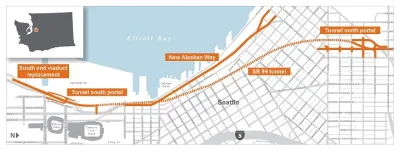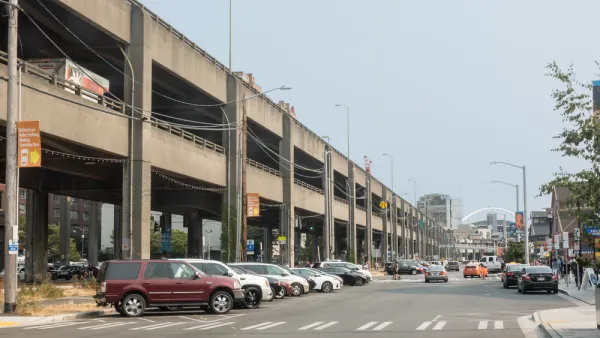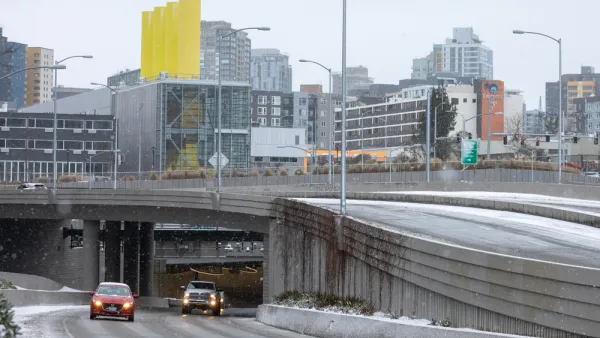There will be no road closures, no traffic bans, no loss of parking, and no new transit lines opening. Call it the "tolling effect" on Nov. 9 when motorists have to pay to drive through the two-mile State Route 99 tunnel that opened last February.

"Traffic inside the new SR 99 tunnel could see a big reduction when the tolls go into effect next month, state and city transportation leaders told the Seattle City Council on Monday," reports Kara Kostanich of KOMO News.
The Washington State Department of Transportation [WSDOT] says between 30% and 50% of the more than 80,00 drivers who use the tunnel daily could divert out of the tunnel when tolling starts on November 9.
WSDOT predicts drivers will use transit, work from home or find alternatives routes.
Five thousand cars travel through the tunnel every hour during during peak times. After tolling starts, that number is expected to drop to around 3,200 vehicles per hour [36% reduction].
Officials predict that after initial drop, traffic through the tunnel will creep back up over the next few months settling around 4,200 cars per hour [16% reduction].
Tolls, while 24/7 and bi-directional, are modest for the two-mile, four-lane tunnel (two lanes in each direction), ranging from $1.00 to $2.25, depending on the day, time and direction for those with a "Good To Go!" pass. Add $2 for "Pay-By Mail".
And the tolls are not punitive. As posted earlier, the state legislature determined in 2012 that tolling would be needed to raise $200 million of the $3.3 billion it cost for the Alaskan Way Viaduct Replacement Program (including $223 million from cost overruns due to "Bertha" tunneling woes) and cover ongoing operation and maintenance costs.
The tunnel opened to traffic on February 3.
Related in Planetizen:
-
New Marketing Campaign: Pushing People to Drive More in Seattle, January 27, 2019
-
Setting the Toll for New Seattle Tunnel, May 31, 2018
Hat tip to IBTTA Smart Brief.
FULL STORY: SR 99 tunnel traffic to take at least a 30% hit from tolling

National Parks Layoffs Will Cause Communities to Lose Billions
Thousands of essential park workers were laid off this week, just before the busy spring break season.

Retro-silient?: America’s First “Eco-burb,” The Woodlands Turns 50
A master-planned community north of Houston offers lessons on green infrastructure and resilient design, but falls short of its founder’s lofty affordability and walkability goals.

Delivering for America Plan Will Downgrade Mail Service in at Least 49.5 Percent of Zip Codes
Republican and Democrat lawmakers criticize the plan for its disproportionate negative impact on rural communities.

Test News Post 1
This is a summary

Test News Headline 46
Test for the image on the front page.

Balancing Bombs and Butterflies: How the National Guard Protects a Rare Species
The National Guard at Fort Indiantown Gap uses GIS technology and land management strategies to balance military training with conservation efforts, ensuring the survival of the rare eastern regal fritillary butterfly.
Urban Design for Planners 1: Software Tools
This six-course series explores essential urban design concepts using open source software and equips planners with the tools they need to participate fully in the urban design process.
Planning for Universal Design
Learn the tools for implementing Universal Design in planning regulations.
EMC Planning Group, Inc.
Planetizen
Planetizen
Mpact (formerly Rail~Volution)
Great Falls Development Authority, Inc.
HUDs Office of Policy Development and Research
NYU Wagner Graduate School of Public Service





























